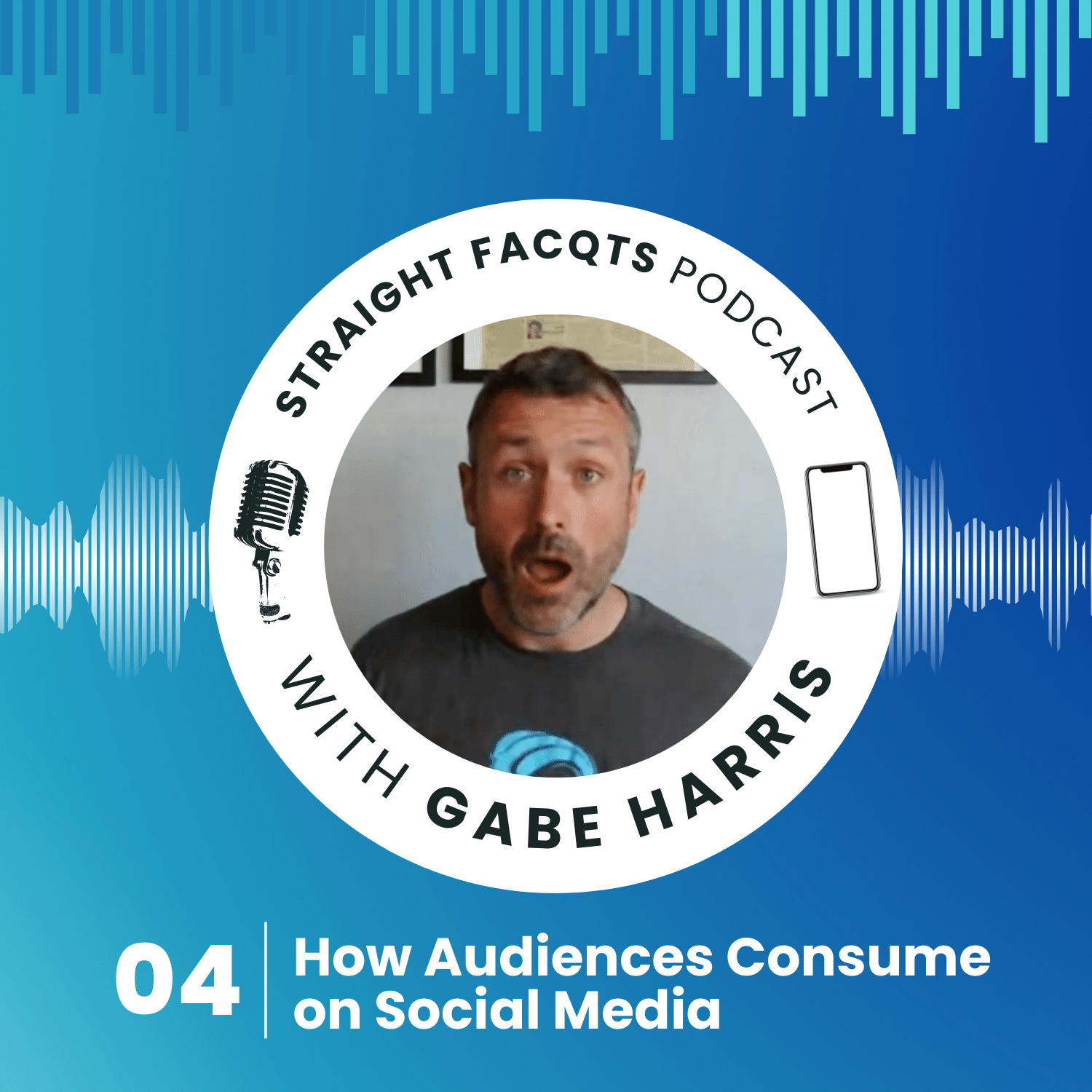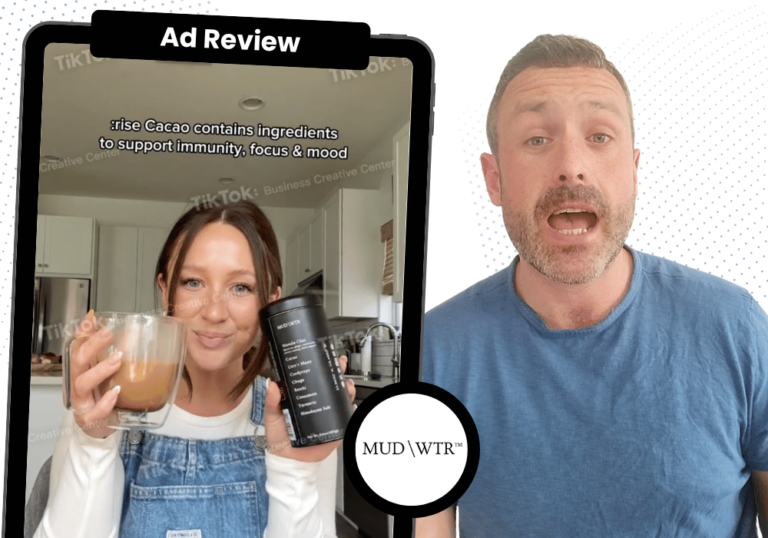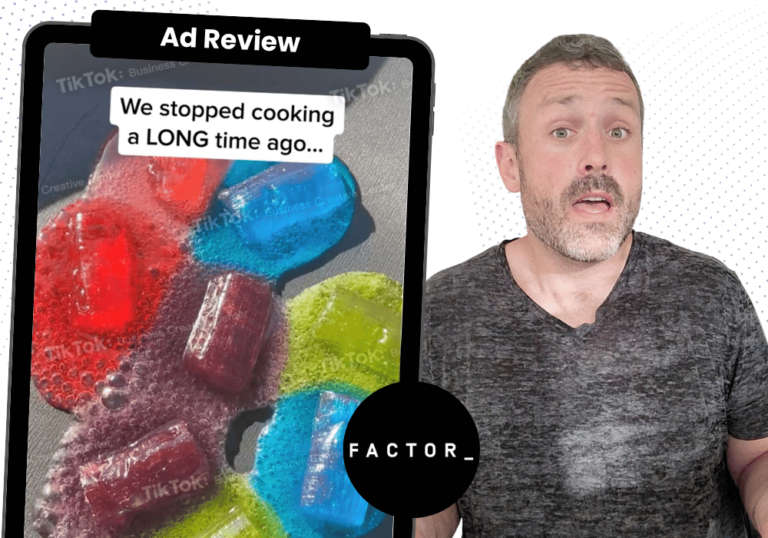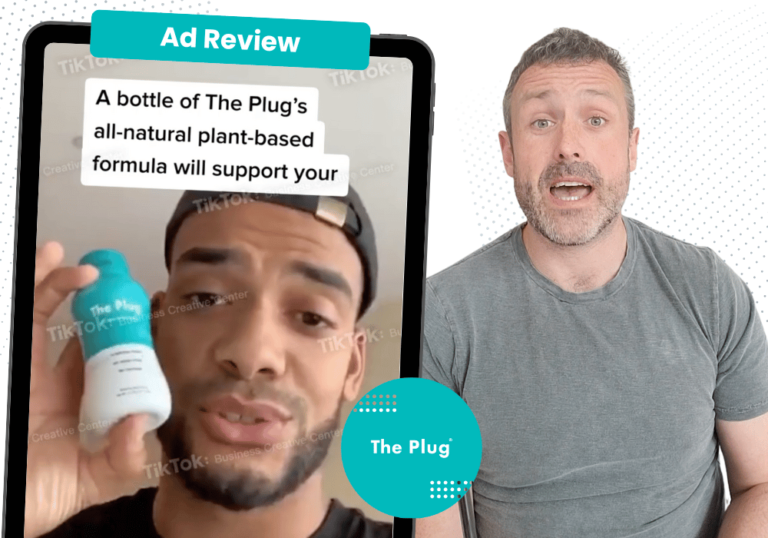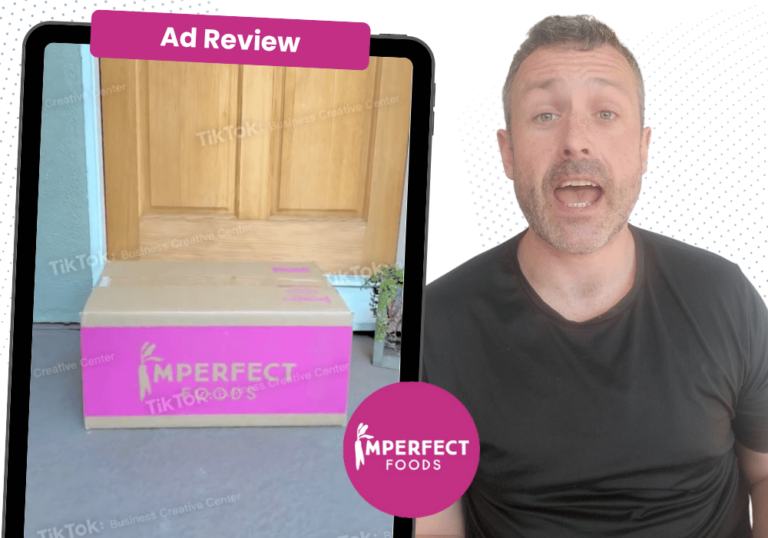Today’s podcast talks about how audiences consume on social media and how you as an advertiser can make the most of it. Listen to the episode here!
What’s going on? My name is Gabe, Founder at Facqt, and today we’re going to be talking about how audiences consume on social media. Plus, how advertisers can be able to leverage those habits.
Now most of the data that we’re going to be bringing up is going to be specific to Meta, which is Facebook and Instagram. However, these are going to be applicable across TikTok, and in some cases, LinkedIn as well.
“90% of your ad deliverables are going to be delivered to a mobile phone.”
When it comes to Meta specifically, and it’s even more for TikTok, one thing that you really want to be aware of is about 90% of your ad deliverables are going to be delivered to a mobile phone.
What that means is you need to make sure that everything is mobile friendly. You want to make sure you can be able to take as much of the audiences’ screen as possible.
So, you want to make sure you’re using the right dimensions. But you also need to have your landing page optimization, if you’re doing lead generation or eCommerce, to make sure that it’s mobile friendly.
For example, if you are sending them to a landing page, you don’t want that form on the mobile version to be at the very bottom. You want it to be as close to the top and as easily accessible for the audience. As a result, they can be able to submit their information and go further down the funnel.
If it’s specifically a desktop that you’re strategizing for, you’re really going against the grain with how the platform operates.
“The average ad content on mobile is consumed within 1.7 seconds.”
Furthermore, you need to make sure just how quick of an attention span the audiences have with social media. This is because the average ad content on mobile is consumed within 1.7 seconds.
So, the audience needs to be able to quickly conceptualize the product or service you’re selling. Don’t overcomplicate it because they can be able to digest what you’re delivering to them in 1.7 seconds.
And you know what? If it’s just too much information, if you’re trying to overload them, their instant reaction is going to be: “Ha ha, peace. I’m going to watch some more cute puppy videos,” and scroll right past. So, simplicity is a big factor.
On desktop, audiences consume within 2.5 seconds. Now this, I would say, is a very big statistic where 70% of the audience has an on-the-go mentality. This means that they want to be able to understand it quickly.
Not only can they consume the ad content within 1.7 seconds, but they want to be able to quickly digest that content as well. Therefore, an on-the-go mindset is anywhere from about 15 to 30 seconds.
“Make sure that you’re able to let the messaging breathe properly for your audience.”
From an ad standpoint, Facebook really hit home 15 seconds. That also gives you more placements within stories, which is more optimal.
However, TikTok is saying between about 20 to 30 seconds is more of an ideal time for an ad, or that’s the sweet spot. So, it’s a little bit different.
My personal interpretation of that is to make sure that you’re able to let the messaging breathe properly for your audience and have the storytelling breathe as properly as you best can within that condensed period of time. That’s going to be optimal for ad deliverables, specifically for video.
But that again is only 70% of how the audience consumes on Meta. And it’s going to be typically transferable. That’s going to be transferable to TikTok as well where 20% is going to have more of a lean forward. So, they’re going to be able to give more time and about 10% is going to be more of a lean back. That is more long form video.
So as an advertiser, what that means is you want to make sure that you have a wide variety of creative or specifically in this instance, video, that is applicable to what the audience’s current mindset is.
These algorithms are able to identify when the audience is most likely to watch short form, based on their previous habits or previous behaviors, and when they are more likely to watch long form video.
“If your best video is two minutes long, most likely that means your short form videos suck.”
If you do have a long form video, say if you have a 90-second or 120-second video, there is a time and place for it that will supplement your performance. It’s very possible that it’s not going to take the bulk of your budget because that’s not how the bulk of the audience consumes media, but it will definitely give a boost.
Now that does point out if your best video is two minutes long, most likely that means your short form videos suck.
So while it is good to have a wide array of content based on how your audience consumes, you want to still emphasize the short form video more so that you can speak to a higher volume of your audience.
Also within video, there is a big drop off in audience consumption just after a couple of seconds. So if the audience can consume within 1.7 seconds, you can imagine after three or five seconds, the sound of people dropping off.
That is something that you need to be very aware of — where you’re going to be able to speak your messaging to the highest volume of audience which is going to be the beginning of the video.
“85% of the feed is listened with the sound off.”
Also, with how audiences consume, and this is specifically on Meta (Facebook and Instagram), 85% of the feed is listened with the sound off. When we’re speaking about sound off, sound on worlds, it’s a little bit complex, but you need to make sure that when you’re producing these videos, you are speaking to a sound off world.
This is so the audience can be able to visually follow along without having to hear audio, and understand what the benefit of your ad is. And by doing so, you’re going to get a much larger portion of your audience interacting, engaging, and then further going down the funnel, interacting with your brand.
On Instagram Stories, it’s a little bit different. About 60% of the people do listen with the sound on. TikTok is a much more predominant audible platform as well. So there is a significantly higher audience who is consuming audios on those platforms.
“The easier they are able to digest and conceptualize why they should click on the ad, the higher the chance of them actually clicking on the ad.”
But when you’re building these creatives, you need to make sure that it is for a sound on and sound off world. That way you’re going to get a higher volume of your audience who’s consuming what the point is — the benefit of your ad.
Also by blending sound on and sound off, you’re making it a more seamless content for your audience. It’ll be easier for them to be able to digest what the benefit is of your product or service.
The easier they are able to digest and conceptualize why they should click on the ad, the higher the chance of them actually clicking on the ad. Then you also have offline boost as well for your brand.
So just because somebody doesn’t interact with your ad right away, you’re still going to be able to get that brand awareness larger projection. And by having a more cohesive sound on and sound off world, you’ll be able to improve that brand awareness too.
“Creative can have over a 50% impact on your bid within the auction place.”
One of the things we’ve been talking a lot about is creative. We’re going to go a little bit more into that as well. Why are we talking about creative? Well, one, it can have over a 50% impact on your bid within the auction place.
When we’re looking at how the auction works, it’s your advertiser’s bid times the estimated action rate plus user value. That’s going to be your total bid.
Creative can have over a 50% impact on your estimated action rates and a 10% impact on your user value. By the way, this is 10% plus and 50% plus.
So it’s going to be the most impactful variable that an advertiser has manual control over. The reason why is it’s going to be that audience’s top tier of attention.
“The number one focus point is going to be the creative.”
When it comes to content consumption, the number one focus point is going to be the creative. Number two is headline. Number three is going to be primary text, which is the copy above the headline.
One thing I like to joke around about is if you put in your primary text “click on this ad and you’ll get a million dollars for free,” there’s actually going to be a decent portion of the audience who does not see that because it’s not in the creative and they’re just going to go scroll right past and watch those cute puppies or cute kitten videos.
So that speaks to the importance of the creative and why you should put your north star messaging there, or in other words, your most important messaging points. Have your headline and primary text supplement your messaging points with the creative highlighting it. That should be your main focus point.
“It is by no means necessary that you need to have a strong social media presence in order to be able to do advertising.”
Number four is the advertiser. So they don’t even notice the brand until then. That’s fourth in the audience’s tier of attention. So if you don’t have a big presence on social media, it’s not the worst thing.
We actually ran with a client who has a ghost Instagram account. What does that mean? Basically, they don’t have an Instagram account. If you click on their brand or their logo, you just go to the Instagram homepage. And their CPA, for a B2B client ( which is one of the reasons why they don’t have Instagram because they are B2B), is something many companies would be envious of.
If you want to reach out to me, we can be able to give you a rough estimate of what that CPA is, but it is by no means necessary that you need to have a strong social media presence in order to be able to do advertising. It’s more like a cherry on top with all the additional traffic that you get, but that really isn’t traffic in growing your organic social media presence. It is not an objective from an advertiser.
And then five, which is the last on the audience’s tier of attention, is going to be the social engagement. That’s the different reactions and comments that people are giving you. But while that is important, it is not going to be the driving factor for an ad that is succeeding or not.
“CPMs of videos are going to be typically higher.”
When we are talking about creative, we’re speaking about both images and videos. So Facebook has an 86% confidence that if you’re using both elements (images and video), then you’re going to be able to increase your performance just by having a wider array.
So you want to have that wider array of creative images and videos. Also, you want to be able to test carousels as well, because they do have the ability to tell the story better. As comparison to images within video, you want to have a wide variety of short form and long form so you’re able to speak to your audience based on that particular mindset at that current time.
One of the reasons why you want to have both is because there is a social tier of such, and you can be able to identify this by looking at CPMs of videos and CPMs of images. CPMs of videos are going to be typically higher. The reason why is they’re going to more ideal placements.
Where audiences are more likely to watch a video for say 15 seconds or 30 seconds, Facebook is going to be able to identify this. And when it’s telling advertisers, it’s going to tell them we’ve got a bomb diggity placement. Not only is this audience more likely to consume your video at this particular time, but they’re more likely to become a lead as well.
“While images don’t get the highest click through rates, they do get a lower CPM, which make them profitable as well.”
By having video, you’re able to offset that higher CPM because videos, if done well, are typically going to have a higher click through rate. This not only can be able to offset that high CPM, but actually can flip the script and have a very high level of performance, because they’re able to take advantage of when the audience does have that time — if it’s a really good video. Let’s go.
However if you look at images, it’s going to have typically a lower CPM. So images usually are not going to be placed for that ideal placement when the audience is most likely to watch, say a 15 or 30 second video, or a two minute video, but they’re going to be an ideal placement.
So say if the audience is scrolling and they need to quickly understand what this benefit is, images allow the audience to do that. While they may not be ideal where the audience is likely to spend a ton of time digesting the content, images allow them to quickly conceptualize the purpose of it.
While images don’t get the highest click through rates, they do get a lower CPM, which make them profitable as well. So you have that wide array just based on how audiences consume throughout their daily lives.
Ad Review: Juice Brands
Now let’s get into rating some creatives. Since you’ve been hearing how creative is the most impactful variable, we’re going to rate three different ads. These are from orange juice companies. Let’s go!
The first one is Florida Orange Juice Company.
Florida Orange Juice Ad
Let’s watch that one more time. This time it is going to be with sound off. Cool. So it starts the video with “Revitalize your wellness routine with Florida Orange Juice.”
That’s good. They’re leading with the copy. That is the benefit that they have with it. And then the background works well with that copy too.
So the better the copy and visual background work together, the easier the audience will understand that conceptualization — what the benefit of the product is.
“Revitalize your wellness routine with Florida Orange Juice.” You have that copy. You have them doing yoga, good connection. Then the next scene is “An eight ounce serving contains vitamins and minerals.” We’re seeing the mother and daughter enjoying their day with the product placement of the orange juice right in front of them.
You can see that they are healthy. And then the last scene is “that may help support your overall health and wellbeing.” Then you see a guy just guzzling it down. Maybe guzzling is not the best word but he’s definitely loving that orange juice as he is downing it.
Not only does it make you healthy, but you’re going to enjoy that as well. You see someone visually downing a glass of OJ, that is a positive. He also smiles at the end, so that is a positive experience. Good job Florida Orange Juice, kudos to you.
Number two is Sunkist.
Sunkist Ad
So they’re going a different direction. They’re not talking about how their product is healthy. They’re going for one specific product and they’re trying to highlight how good it tastes.
“Growers set the bar high.” That’s their leading benefit. The highest volume is going to be consuming it. But it’s not talking about the product, which I think is a little bit of a misfire. Instead, they should be talking about their product more so that’s what the audience at least gets a takeaway of. They do have Sunkist in the beginning, which is good for branding.
One thing that the other video didn’t have is the logo right up in front. There’s a couple ways you can be able to do that that doesn’t take away from the acquisition. They do a reasonably good job. Then it talks about ‘Minneola’ but it’s just a still image and we don’t necessarily know why. I wish they could have done a better transition of telling me what it is.
Also, one of the things they are missing here is nobody is downing a glass of OJ or the minneola. Having people in your video smiling has a higher volume of improving your performance.
People want to connect with people. And that’s the one thing I think this is missing out on. It’s not really diving into what makes it different.
Why are they using that blend? They’re just saying “use grapefruit” and showing pictures, but you can go a little bit deeper than that. A good video. Let me say, not a bad video.
Let’s go on to Uncle Matt’s. This is a bad video.
Uncle Matt’s Organic Ad
So it’s a product placement. You see a plastic bottle, it’s Uncle Matt’s. It’s being thrown in orange juice. That tells me absolutely nothing about their product, except for the fact that it’s orange juice.
You can say that there’s copy in the headline or primary text that talk about the benefits of the product. That is 100% true, but it’s not as effective as it would be if it was in the creative. That’s where the audience’s attention is. They know that you sell orange juice, but they don’t know anything that’s different about it in comparison to the rest of the market.
There is a little bit of a brand familiarity that you’re getting, but that’s going to be cheap brand familiarity. That’s going to be hard to show an ROI directly from your brand advertising.
From an acquisition standpoint, you want to be able to generate as many sales as possible directly from the ad. That way, you can be able to better attribute that performance.
And this video is just coming off weak for me. There’s not much to it. It is too top level of an ad for it to really pop. By pop — that is a terrible way of describing videos — I mean, it’s not going to catch the audience’s attention. Nor will it allow them to understand the benefit of Uncle Matt’s.
Final Rankings
So ranking it, Florida Orange Juice, number one. Sunkist, number two and at number three, we’ve got Uncle Matt’s.
Let us know what you think. Did we get it right? Did we get it wrong? Shoot us in the comments below.
If you have any questions, reach out to us as well through @facqtmedia on our different socials: Facebook, Instagram, or TikTok. Thank you so much. Talk later.
That’s how audiences consume on Social Media!
Watch the video here:

